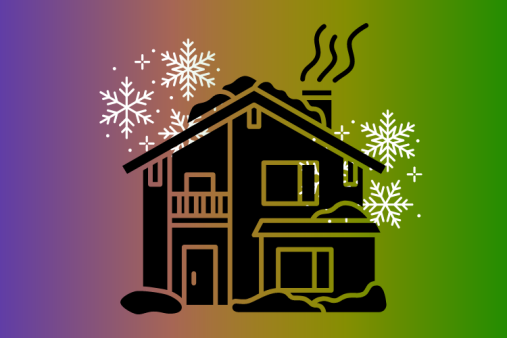Winter roofing problems?
Over the past couple of years the main focus around preparing your home for the winter weather has been around the risks of flooding.
There’s no denying that flooding causes huge amounts of damage, but it only affects a relatively small number of households every year.
Although less dramatic and often less costly, roof damage caused by the weather is far more common but it’s something few of us prepare for.
We can’t always predict where a big storm is going to hit, but we can take measures to try to minimise any damage to our homes by understanding the common Winter roofing problems which may affect us at this time of year.
Common Winter Roofing Problems To Consider
Give your roof an MOT.
We accept that it makes sense to have our cars serviced and checked over regularly, but we don’t extend the same logic to our roof. Just as a good mechanic will make “advisory” notes on your MOT certificate detailing what items are likely to cause problems in the near future, a good roofer will be able to do the same.
Get a trusted local roofer round and ask him to give your roof the once over.
It can be difficult to identify potential problems if you don’t know what you are looking for and haven’t got ladders long enough to get up on the roof.
Ask friends or family to recommend a local firm which you can trust to give you an honest report on the state of the roof.
Clear out the Gutters
Guttering can easily get clogged over time with debris or leaves, even if you don’t have any tall trees close by.
An overflowing gutter will mean that the water instead trickles down the outside of your home, and this can cause problems with damp.
Damp inside the home caused by poor maintained guttering can be costly to fix, so it is much better to get someone in to clear out guttering regularly.
Expect to pay around £50 to £70 for someone to clear out the gutters on the average three bedroom semi.
This job should only take about an hour.
Deal with Tall Trees
Damage caused by trees falling onto roofs can be hugely expensive, often meaning you have to move out of the house while the entire roof is rebuilt.
The cost may be covered by your buildings insurance, but many insurers are now putting a clause into their policies which excludes damage from trees growing within a certain distance of your property or which have not been properly maintained.
You should be able to tackle smaller hedges or shrubs yourself with a pair of shears or secateurs, but larger trees will need the specialised expertise and equipment of a tree surgeon.
If you are having a tree removed completely, expect to pay from £300 depending on how large the tree is, and how easy it is to get access to the area where it is growing.
If you would prefer to keep the tree but just lop off overhanging branches to keep it away from the house, the price will be less.
If you do have trees growing in the garden, or even in a neighbour’s garden close to your home, check the terms and conditions of your insurance policy to make sure you are covered for damage.
Fix any Loose Tiles or Slates
Tiles or slates on the roof can easily work their way loose over time, but in high winds slates or tiles can come flying off the roof causing damage not only to your property but to vehicles, people and neighbouring properties too.
It’s usually fairly easy to spot a tile which has come loose as it will look squint when compared with the others on the roof.
If you’ve asked a roofer to come and check your roof this is the sort of thing they will easily pick up, and you can expect to pay around £60 for a roofer to fix a single tile.
If your roof is awkward to access and will require scaffolding, then you can expect to pay substantially more.
Ignoring a loose slate or tile can mean a much larger bill in the long run, especially when it allows water to seep into the fabric of the roof. Deal with it sooner rather than later.
Roof Insulation
Most of us know how important it is to insulate the loft space to stop heat escaping through the roof, so this is one of the Winter roofing problems which should be no surprise.
If your loft is already floored, or if it is already being used as a living space, it’s not always practical to rip up the flooring and lay insulation.
You can however still save money on your heating bill by fixing insulation directly onto the underside of the roof.
Roof insulation typically comes in large sheets rather than in rolls, and can be cut to size before plasterboard is fitted over the top.
A second option is to get in a specialist firm who can spray a thick layer of foam insulation material all over the underside of your roof before putting plasterboard over the top.
This method keeps your loft warm, and you can expect to save similar amounts as you can with traditional loft insulation – savings of anything up to £250 per year.
Check the Flashing
Another one of the common Winter roofing problems relates to lead flashing.
Flashing is usually lead, and is the name given to the material which makes the joint between the roof and the wall and keeps it sealed and watertight.
Over the years flashing can degrade and this can allow water to get in.
When you’re dealing with heavy snowfall or rain, flashing which is breaking down can cause water to leak into the house and can cause considerable damage. Sealing a roof using flashing is a skilled job and not one which the amateur should attempt unless they know what they are doing.
Most roofers will need to erect scaffolding to work on the flashing, and you can expect to pay upwards of £700 to have it all replaced.
If only sections of the flashing needs attention and you can strike a deal with the roofer to do other jobs such as replacing tiles at the same time, you may be able to strike a better deal.











